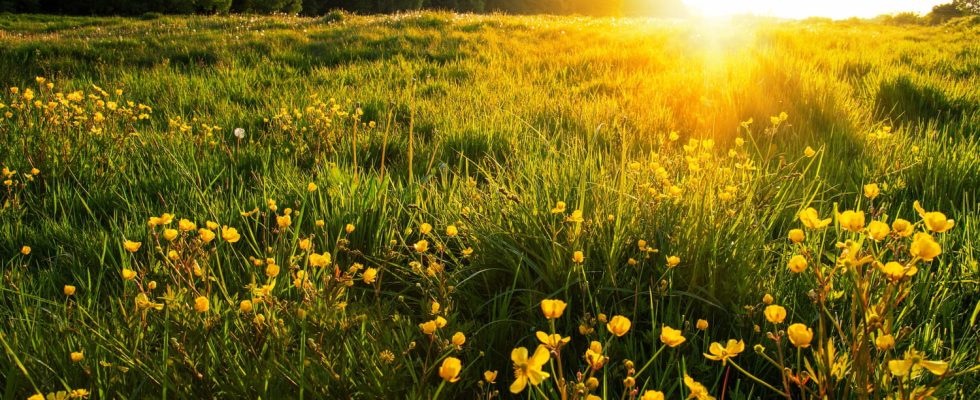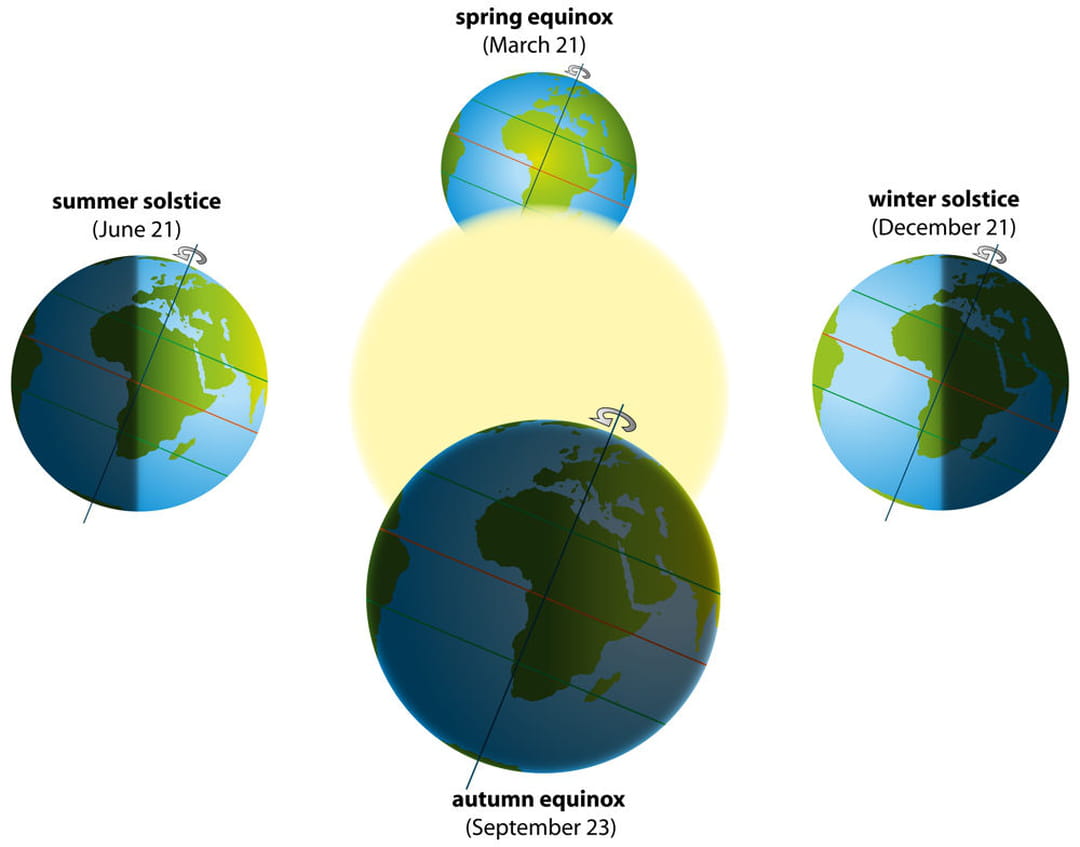SPRING. The vernal equinox which takes place this Monday, March 20, 2023 marks the beginning of spring. Will the good weather be there? We take stock of the weather that awaits us in the coming weeks.
[Mis à jour le 20 mars 2023 à 13h08] Marking the beginning of spring, the vernal equinox will take place this Monday, March 20, 2023 at 10:24 p.m. (French time). At that time, the Earth will be positioned relative to the Sun in such a way that half of the terrestrial globe will be illuminated while the other half will be plunged into darkness. The Sun will then be vertical to the equator, which means that the days and nights will be almost the same length at this time of year.
Always located between March 19 and 21, the spring equinox marks the end of winter and the beginning of spring which settles down until the summer solstice, in June. The return of long days and a blooming nature again, does the March equinox mark the arrival of fine weather and the end of the gray weather? We take stock of the major weather trends that await us this spring. Explanations around the phenomenon, relationship with spring, time and date… Here are all the keys to understanding the equinox.
If the vernal equinox marks the beginning of spring, the good weather is not always there. According to specialists from Meteo France, this season should be marked by milder weather than normal, particularly in the southeastern part of Europe. Rainfall, which has been rare since the beginning of the year, should return during the season, particularly in the southern half. We therefore expect a mild and more or less rainy spring depending on the weather models used.
After a start to winter marked by a particularly unusual drought, the month of March brings with it the return of disturbances. Temperatures remain above normal in eastern Europe and colder in the north of the continent. In France, the temperatures are mild for the season and the showers of March have been there since the beginning of the month.
The disturbances of March are likely to ease in April since an anticyclone could take place over most of Europe. We can therefore expect drier than normal weather for this time of year. This will be the time to take advantage of the beautiful sunny days and particularly mild temperatures.
However, the meteorological models do not entirely agree since other specialists rather predict disturbed and humid weather, particularly in the south of the country. Neither scenario is currently preferred.
The month of May should be marked by a return of precipitation in France. The weather will therefore be unstable and wet throughout the country. We will still be able to enjoy warm days since temperatures should remain above normal despite the return of humidity. The first storms of the season are also expected to appear.
Although weather trends are difficult to predict beyond three months, the start of summer 2023 promises to be both warmer than normal but also drier, particularly in the northern part of Europe. The already worrying water deficit at the beginning of spring is likely to worsen.
The Spring Equinox 2023 will take place on Monday, March 20 at 10:24 p.m. seconds french time (21:24 and 24 seconds universal time). From an astronomical point of view, spring begins at the time of the vernal equinox, which can take place between March 19 and 21. It lasts until summer solstice. This means that spring lasts about three months. The date of the equinox is calculated for each year by astronomers and mathematicians. It is a question of predicting the exact moment when the plane of the equator and that of the trajectory of the Earth coincide. A calculation made necessary by the gap between our calendar, our time system and the movements of the stars. First, the Earth’s orbit is not perfectly circular, which means that depending on its position in this orbit, the Earth can be more or less close to the sun (between 147 million kilometers minimum and 152 million kilometers maximum). This inevitably makes the lengths of each season very irregular and therefore the variable spring date.
Another explanation: the Earth does not take exactly 365 days to circle the Sun. In this our Gregorian calendar, established in the 16th century, is much too simplistic. Indeed, it takes 365.2422 days to be exact (365 days, 5 hours and 46 minutes) for us to have made a full circle around the star! We are therefore obliged to add from time to time a February 29 (during leap years) to partially (and only partially) correct this discrepancy. A one-time addition that artificially pushes back the spring date by one day during leap years. This explains why astronomers have “advanced” it to March 20 last year. And that the situation arises again this year.
When Caesar established the Julian calendar in 45 BCE, the vernal equinox was set for March 25, based on imprecise observations at the time. But the absence of February 29 in this ancient calendar ended up moving this date to March 11 in the 16th century… It was only when the Gregorian calendar (the one we use today) was established. , in 1582, that a date approaching March 21 was chosen.
The date of “common” spring should not be confused with that of meteorological spring, which begins on March 1 each year, allowing meteorologists to make their seasonal calculations on the scale of entire months. In meteorology, we consider that spring begins on March 1 and ends on May 31: in this discipline, spring is characterized as a period of warming temperatures (in our latitudes) and an increase in the duration of the day. It is also one of the most difficult seasons to analyze in this discipline. However, it is the equinox that continues to mark the advent of spring in people’s minds. Witness the events organized around March 20 in France, starting with the Printemps du Cinéma.
The word equinox comes from the Latin “æquinoctium” (“equal night”) for the most visible phenomenon for man is that the duration of the day becomes identical to that of the night. The reason for this phenomenon? The equinox corresponds to the time of the year when the Sun crosses the equatorial plane of the earth. The star is then at the zenith of theEcuador, which allows day and night to share the time equally. And this in both hemispheres, southern and northern. On our side, the days are getting longer and we are halfway between the short days of December and the long days of June. During the equinox, the axis of rotation of the Earth on itself and the axis of rotation of the Earth around the Sun therefore correspond exactly. On our planet, during the equinox, our star appears due east at dawn to disappear due west.
This phenomenon is also related to geometry. The Earth’s axis of rotation is naturally inclined at 23.4° with respect to the plane of its orbit. In other words, our planet “leans” in relation to the plane on which it revolves around the Sun (see diagram below). The star therefore illuminates it differently depending on the time of year. This phenomenon explains why the days lengthen or shorten between summer andwinter. This also gives rise to the seasons, due to the heating or cooling of the air masses and the oceans according to the time spent each day under the rays of the star. The distance between the sun and the Earth, on the other hand, has no direct link with the temperature. Know for example that the Earth reaches the closest point to the sun (the perihelion) on January 3, ie in the middle of our winter.
The equinox occurs twice a year: between March 19 and 21 (spring or vernal equinox) and between September 22 and 23 (autumnal equinox). In spring, the duration of sunshine increases at the equinox to reach 16 hours at the end of June, during the summer solstice. Conversely, the autumnal equinox begins a period of reduction of the day which goes down to just over 8 hours at winter solstice, around December 21. During the equinox, on the other hand, no jealousy: day and night are supposed to last 12 hours each. However, these data vary slightly since the shape of the Earth is not perfectly regular and the atmosphere slightly deflects the sun’s rays. Thus, in Paris, on March 20, last year, the sun rose at 6:52 a.m. and set at 7:03 p.m. The length of the day was therefore very slightly longer than 12 hours. It is also at the time of the equinoxes that the length of the day increases/decreases the fastest in our latitudes.
Spring equinox and pagan festival are closely linked. Thus, different celebrations of the vernal equinox around March 21 existed in very ancient times, some of which still survive today. Among them are the bonfires which symbolize liberation from the darkness of winter; or the cakes offered to a deity; when it is not a straw mannequin that is burned or launched, as if to “destroy” winter.

